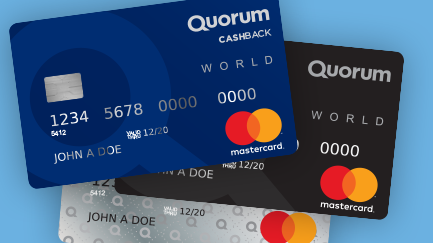Expecting a child? Part of preparing financially for your baby may include factoring in daycare costs. A recent report indicates that center-based childcare runs between $19,000 and $28,000 annually. This cost actually tops the list of family expenses—including housing—in the Northeast, Midwest and South. In the West, childcare trails right behind housing.
If you are worried about how much it’s going to cost to enroll your child in daycare (or how to find suitable childcare given close to 16,000 childcare providers permanently closed in the midst of the pandemic), you are not alone. Below are some tips to help you find daycare for your little one, as well as ways to stretch your savings to cover the rising costs. Be sure to consult your tax advisor and employer for advice related to your taxes before making any decisions.
Traditional daycare options
When it comes to traditional daycare, choices include:
- Childcare centers: These providers must follow all state laws and regulations to operate legally. They typically offer full- and part-time care that is delivered in a structured classroom setting with children grouped by age. Many even offer after-school and summer programs for school-age children. Such centers are owned by various entities like:
- For-profit chains
- Local businesses
- Public or private schools
- Non-profit entities, such as faith-based or community organizations
- Family childcare homes: These programs are run by individuals who are also subject to state laws and regulations. They may offer full- and part-time care, either of which is delivered to a small group of children of varying ages in the person’s own home. Parents choosing this option typically like that their child sees the same caregiver every day in a home environment.
- Early Head Start and Head Start: These federally funded and regulated programs offer center-based childcare across the country for families who meet the income eligibility requirements.
- Nannies: With this option, families hire a professional to care for their child or children in the family home.
Resources for finding daycare providers
Each state has a website to help you locate childcare centers and family childcare homes near you. Find your state’s site here. Or, the Office of Head Start can help you locate one of its programs in your city. As for nannies, a credible caregiver agency that fully vets its candidates can help you locate a qualified one. Friends and family members may also be able to recommend a good provider.
If you’re unsure which type of childcare you prefer, try visiting a few childcare centers and family childcare homes so you can see what the different setups look and feel like. Likewise, if you know anyone who has a nanny, ask if you can visit while they’re on duty to get a sense of how this type of care differs from group settings.
Questions to ask childcare providers
Once you’ve put together a list of potential childcare centers and/or family childcare homes, arrange a tour of each facility. While on site, pay attention to the overall atmosphere and try to speak with multiple staff members. Asking key questions like these will help you determine which facility is the right choice for your family:
- What is your childcare philosophy?
- What is the daily routine for children?
- What is your caregiver-to-child ratio?
- Do you require your caregivers to have any special training or certifications?
- How long have your caregivers been on staff?
- Are you licensed and insured?
- What days of the week are you open and what are your daily hours of operation?
- Are you closed for any holidays?
- Are parents allowed to visit any time?
- What are your security protocols?
- How much does your program cost?
- Do you have current availability or a waitlist?
- Do you serve daily meals or are parents responsible for providing their child’s food?
- How do you handle formula or breastmilk bottles?
- Do you provide supplies, such as diapers and wipes?
- What is your policy when children are sick?
- How do you handle children with allergies or medication requirements?
- Is there a nurse or other medical professional on staff?
- How do you keep the facility clean and sanitized?
For those opting for a nanny, make sure you ask about each candidate’s qualifications, experience, references and background, including any criminal history. Also consider arranging time for prospective nannies to interact with you and your child.
Alternative childcare options and considerations
Depending on how your childcare search goes, you may consider some alternatives. These include finding a family member or friend, such as a retired grandparent or neighbor, who is willing to take care of your child. You could discuss sharing a nanny with another family to reduce the cost. Or you might ask multiple other families in the same situation to share childcare responsibilities, such as each family providing care for the group one day a week.
When to start looking for daycare
If you’re planning out your yearly expenses and know that your child will have to be enrolled in daycare soon, make sure to do your research early and know which ones you might want to consider. Many have wait lists and strict dates for enrollment. For toddlers to school-aged children, enrollment dates could easily begin as early as the spring before the school year begins. Infant daycares have more flexible enrollment periods, but it’s best to reserve a spot while you’re still expecting, especially if you plan on going back to work shortly after your child is born.
Don’t count on an affordable, middle-of-the-road facility when the time comes; these are often very popular and overbooked. Wait until the last minute and you may only be left with either the most expensive or less than ideal daycare options.
Weighing the costs: should one parent stay home instead of enrolling a child in daycare?
For many people, work isn’t about the amount of money they bring home. They enjoy what they do and like getting out of the house every day. However, for those who are working solely to help with expenses, full-time employment may not actually be to the household’s benefit. Here are a few additional things to consider:
- Hidden Costs of Daycare: You’ve received the cost of enrolling your child in daycare…. But what about the hidden costs? Most centers will charge extra if you’re late or your child needs to stay longer. If you’re paid hourly, understand that you may not be able to work overtime, or you won’t get paid if you need to stay home when your child gets sick. (Even if your child can’t attend, many facilities still require payment for the days he or she misses.) Will there be field trips or parties? Are the prices for those events included, or are they extra? Do you have to pay for food and supplies (such as diapers, formula, blankets, and toys)? Unfortunately, the price tag that daycares provide rarely reflect the actual price you’ll pay.
- Travel Expenses: How long does it take to drive to the care facility? Is it out of the way? What time is everyone getting home? How much are you spending on gas every month to get to and from your child’s childcare?
- Food: It can be difficult to have the energy to cook dinner when you’re getting home after 6:30. Do you find the whole family is eating out more because of work, coupled with childcare?
Explore Dependent Care FSA to save money on daycare.
A Flexible Spending Account, or FSA, is a tax-advantaged financial account—governed by the IRS—that is set up with your employer.
Using this vehicle, parents can save an average of 30% on childcare. All funds are withdrawn from your paycheck before any deposits are made and before any taxes are deducted.
If your child is under 13, you can use an FSA for the following:
- Babysitting
- Nanny Expenses
- Daycare
- Nursery School
- Preschool
- Before and After School Care
- Summer Day Camp
Keep in mind that if you’re married and filing jointly, or if you are single, you can contribute a maximum of $5,000 a year for childcare to your FSA.
Ask your tax advisor about the Child and Dependent Care Credit.
Any amount you spend on childcare that enables you to either work or look for employment might entitle you to a child and dependent care tax credit. The amount of the credit depends on how much you pay for the childcare and your overall gross income (and keep in mind, may be changing with new tax laws). If you take advantage of such programs like the Dependent Care FSA, you must subtract the amount of those benefits from the dollar limit that applies to you. All in all, no more than $3,000 can be received for each child.
If you qualify for a child and dependent care tax credit, you’ll need to fill out Form 2441, 1040, or 1040NR.








Comments Section
Please note: Comments are not monitored for member servicing inquiries and will not be published. If you have a question or comment about a Quorum product or account, please visit quorumfcu.org to submit a query with our Member Service Team. Thank you.